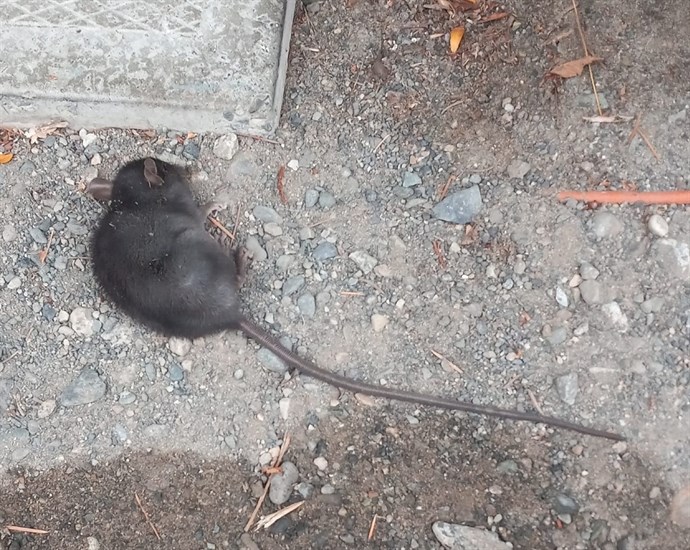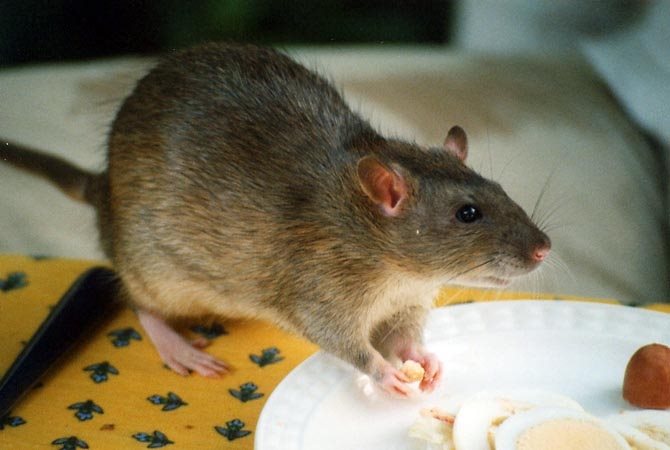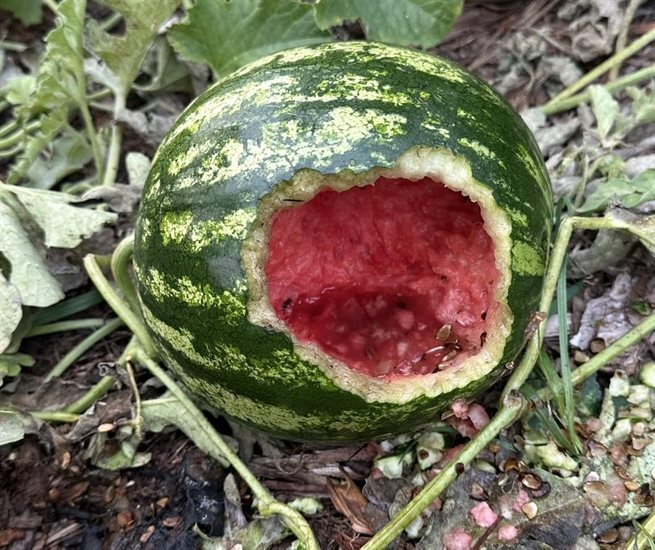Why you better get used to living with rats in Kamloops, Okanagan

Rats.
They damage buildings, electrical wires and crops with teeth that are sharp enough to chew through metal. They prey on livestock, carry and spread a variety of diseases and a breeding pair of them can produce more than 900 offspring within a single year.
Left unmanaged by homeowners, municipalities and the provincial government, it’s no wonder rat populations are continuing to grow every year in the Okanagan and Kamloops.
Brian Husband grew up in Kamloops and sees more and more rats in his downtown neighbourhood every year. He recently found a dead one on his property that had eaten some poisonous pellets.
“We always discover them in the alley or under our storage shed,” he said. “I just found two or three rats in an alley a block away. I’ve noticed more in my neighbourhood every year since 2016 with the exception of last year. It needs to be addressed, let’s not become like New York City.”
Matthew Wright with Orkin Canada in Kelowna said the numbers of rats are higher this year, and without governments taking action, the problem will continue to grow.
“The numbers have been increasing gradually over the last few years, I wouldn’t say it's spiking dramatically this year but it's going to keep getting worse.”
Some might wonder just how big the rat populations are in our local cities and surrounding areas, and what, if anything, can be done to control their increasing numbers.
Gail Wallin is the executive director of the Invasive Species Council of British Columbia. She said the council has been getting more reports of rats in the Kamloops and Kelowna areas, and there is concern over how fast rat populations are moving and growing, yet it isn’t clear what their numbers are.
“There is no accurate number of populations of rats in Kelowna or Kamloops, no one is managing them,” she said. “If we wanted more information, cities would have to do surveys which hasn’t been done. Pest control companies will have an idea so there are ways to get an estimate but it won’t be an actual number. There could be value in getting a better idea of how many rats are in a certain area but if you’re not going to do anything about it, why invest.”
Wallin said without a coordinated effort by municipal, regional and provincial governments and property owners, the problem will keep getting worse.
“Because they (rats) are in urban areas, it’s a local government issue,” she said. “The first step is prevention, stopping rats from moving from one area to the next. It has to be agreed across jurisdictions, there must be commitment, resources and a coordinated plan in place.”
The province of Alberta has a rat free policy for the province where if there is a report of a rat, a control staff member will be dispensed to remove it.
“We don’t have that approach in BC,” Wallin said. “There hasn’t been a coordinated effort to remove them and make sure people are not moving them as they move, if the rats are hidden in vehicles for example. That’s the challenge with so many invasive species, there are no regulations for many of them.”
Wallin said residents have to raise problems with rats to city councils and regional districts otherwise “you can expect to keep living with rats.”
Kamloops and the Okanagan are home to native woodrats and invasive roof rats that are attracted to cities for the accessible food, bird seed and garbage. Wright said roof rats rely on homes and structures for survival. With winter temperatures quickly approaching, rats will be moving inside structures to keep warm.
“What you have is roof rats and the native species the wood or packrat,” he said. “Packrats will find natural places to hide while roof rats have to have people, they need people’s houses to get shelter. With stable food sources around, the population keeps booming.”
Orkin Canada released its annual list of the rattiest cities in Canada on Oct. 31. Kelowna made the list, but Kamloops is not on it … yet. Other rattiest cities in the province to make the national list are Vancouver, Burnaby, Richmond and Victoria.
Orkin’s Top 20 rattiest cities in B.C. include Kelowna coming in third place, Vernon at number 7, Kamloops at 13, Penticton at 18 and Lake Country at 19.
City rankings are based on the number of commercial and residential rodent (rat and mice) treatments that Orkin Canada carried out from August 1, 2022 through July 31, 2023.
READ MORE: Kamloops non-profit takes city to court over sewage backup
Wright said keeping clutter and debris away from the house will deter the rats by removing the “comforts of a bush or board” they can hide behind. Removing any and all food materials from gardens and rodent proofing compost bins with screens is helpful.
Brian Husband said his property is free of food sources, but he still has rats.
“We don’t have bird feeders or a compost, there isn’t a source of food,” he said. “There are endless sources of food around the city. Managing this problem needs to be on someone’s agenda.”
To contact a reporter for this story, email Shannon Ainslie or call 250-819-6089 or email the editor. You can also submit photos, videos or news tips to the newsroom and be entered to win a monthly prize draw.
We welcome your comments and opinions on our stories but play nice. We won't censor or delete comments unless they contain off-topic statements or links, unnecessary vulgarity, false facts, spam or obviously fake profiles. If you have any concerns about what you see in comments, email the editor in the link above. SUBSCRIBE to our awesome newsletter here.





